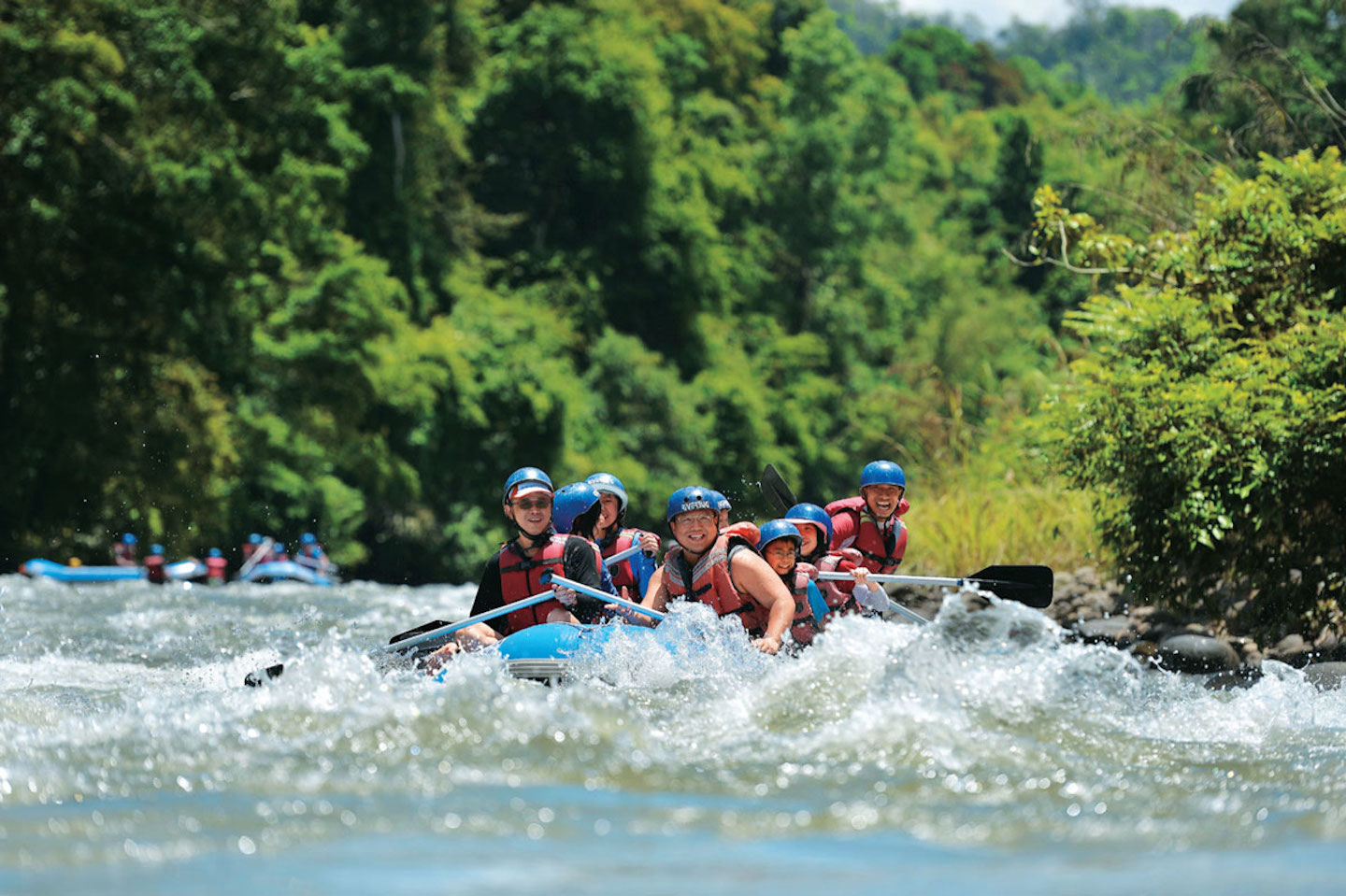
Tuaran is famous for white-water rafting in Sungai Kiulu
Shangri-La Rasa Ria’s head concierge and Tuaran native Ak Sopryshah Ak Tajuddin has some insider tips on what to do, eat and buy when you are exploring this up-and-coming tourist destination.
TO VISIT
A newly opened tourist attraction in Tuaran, Peak of Hope promises a great family outing with its varied list of activities, ranging from paragliding to ATV rides as well as lounging around to enjoy the sunset. An Instagrammer’s dream for its eye-widening views of Mount Kinabalu, Sungai Kindu and Hutan Simpan Tasik Sulaman, Peak of Hope is staffed by expert guides who ensure anyone who visits has the time of their lives.
peak_of_hope.jpeg
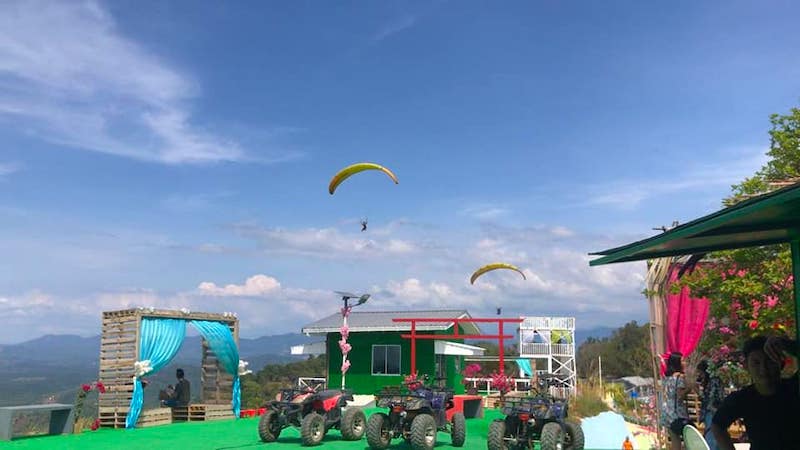
If you have never gone white-water rafting, Sungai Kiulu is the ideal river to experience it for the first time. As you navigate the grade 1 to 2 rapids, expect to see a variety of wildlife in their natural habitat while getting a proper workout to boot. The 15km trip will take just 2½ hours and ends with lunch on the banks of Sungai Kiulu. Cap your trip with a walk on the Tamparuli Suspension Bridge, which you might have heard mentioned in the popular Kadazan-Dusun jingle Jambatan Tamparuli.
sungai_kiulu_1.jpeg
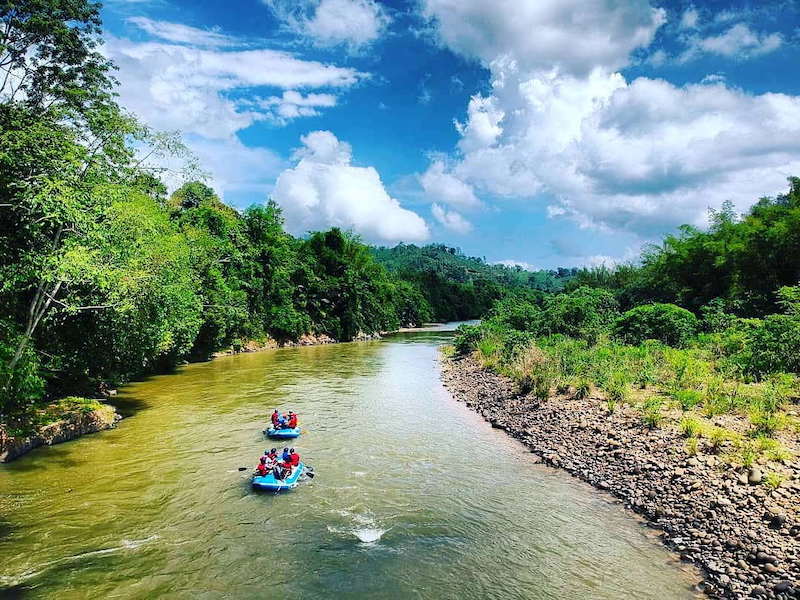
Positioned astride mangroves of Tasik Sulaman, Kampung Sambah is a traditional fishing village that offers visitors a glimpse into the past. A river cruise is an easy-going way to explore the mangroves, while weather-dependent sightings include fireflies and shimmering blue plankton. Owing to the area’s rich crop of seafood — which you can also help catch — expect a wholesome meal while there too, with the udang salai a speciality.
TO EAT
A signature noodle of Sabah, mee Tuaran is unique for its texture — springy with a slightly crisp exterior while maintaining a firm bite on the inside. Handmade from flour and egg yolks, the noodles are most often fried up with slices of char siew and sliced egg rolls, although at Kedai Kopi Lok Kyun, you can also find them swimming in a sweet and savoury soup.
mee_tuaran.jpg
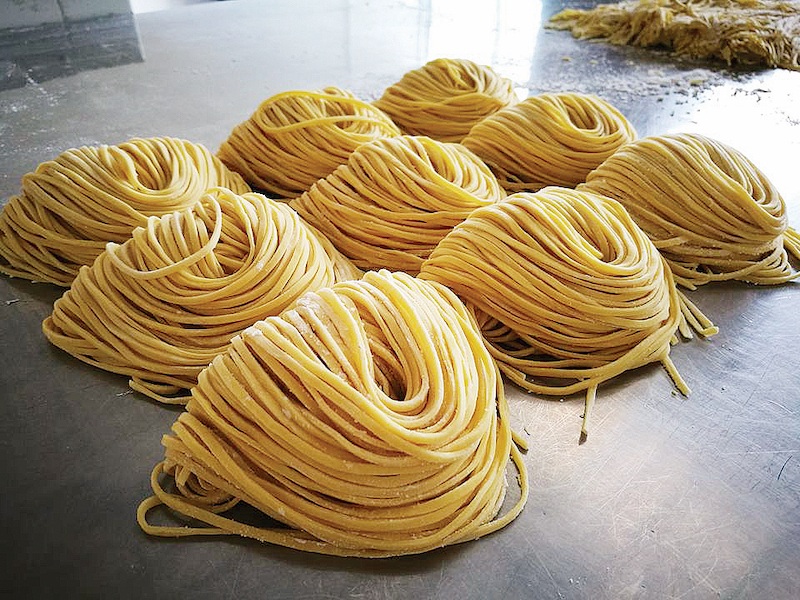
Sometimes called linut by the Melanaus in Sarawak, ambuyat is a sticky, starchy dish made from the Rumbia tree and is incredibly popular across Borneo. Plunge and twirl a pair of bamboo sticks into the starchy goo so that it sticks to the utensil, dunk it in a dipping sauce and then directly transfer to one’s mouth where you can slurp it down with no chewing required. The most typical dipping sauce is binjai cacah, made from a local sweet and sour fruit along with lime, onions, garlic and chillies. This dish is easily found at the Tuaran market.
Rojak isn’t a particularly exotic dish but the version served at Kedai Kopi Yung Siong in central Tuaran is a must-try. Blanched yellow egg noodles, cucumber, turnip and hard-boiled eggs drenched in a peanut sauce come with an option of beef slices, chicken slices or a combination of the two, and most unusually, a bowl of hearty sup tulang, or bone broth, on the side.
TO BUY
Traditionally made by the women of the Bajau community, the tenduang is a conical tudung saji that is made with brightly coloured strips of daun serdang, or footstool palm leaves, stretched over a taut frame. Although you can use it to cover food as was originally intended, this could also work as a catch-all for knick-knacks, or to provide a splash of colour to a plain wall.
tenduang.jpg
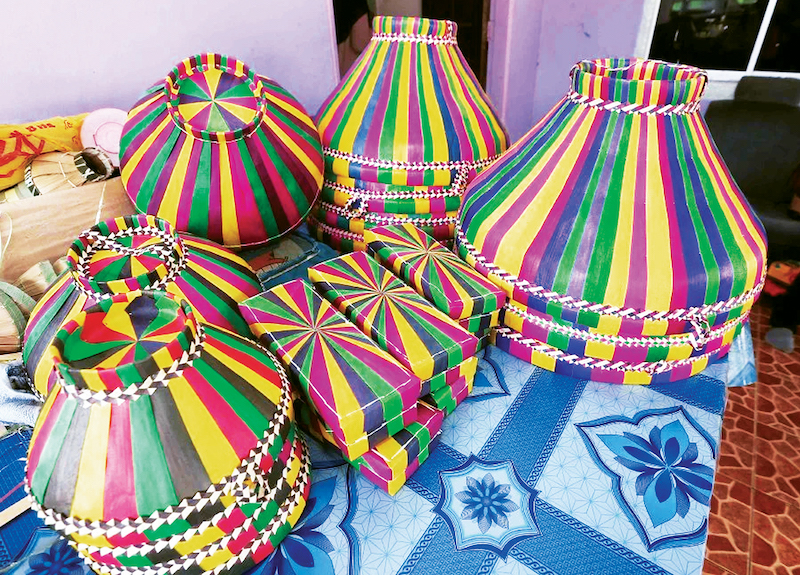
Linangkit is a generic term for a needlework technique that is a unique feature of textiles worn by several indigenous groups on the west coast of Sabah. They have their own style and uses for linangkit — the Lotud use bright orange and red threads to create geometric patterns inspired by melon seeds, the Rungus create motifs in less dominant shades to decorate seams of sarongs and waistbands, while Bajaus and Iranuns use linangkit for ceremonial skirts. Our suggestion? Frame it like you would a piece of art for a unique memento of your trip.
In Sabah, nyiru are used to separate the paddy grain from its chaff. Made from thin strips of the Bemban leaf stem, nyiru are essentially shallow oblong, egg-shaped or round trays that have multiple uses in any home. Most often woven by the Rungus and Dusun communities, nyiru often retain a distinct, woody scent from the bamboo strips that they are made from.
nyiru.jpg
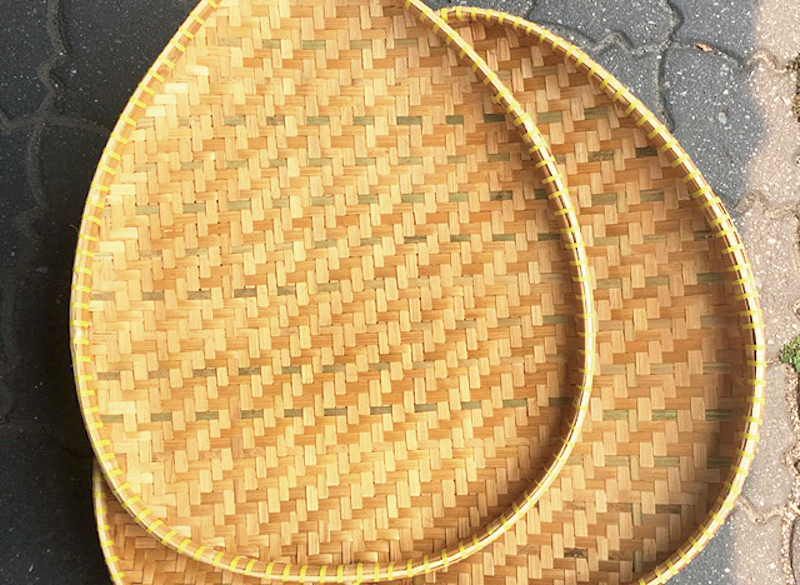
This article first appeared on Jan 10, 2022 in The Edge Malaysia.


